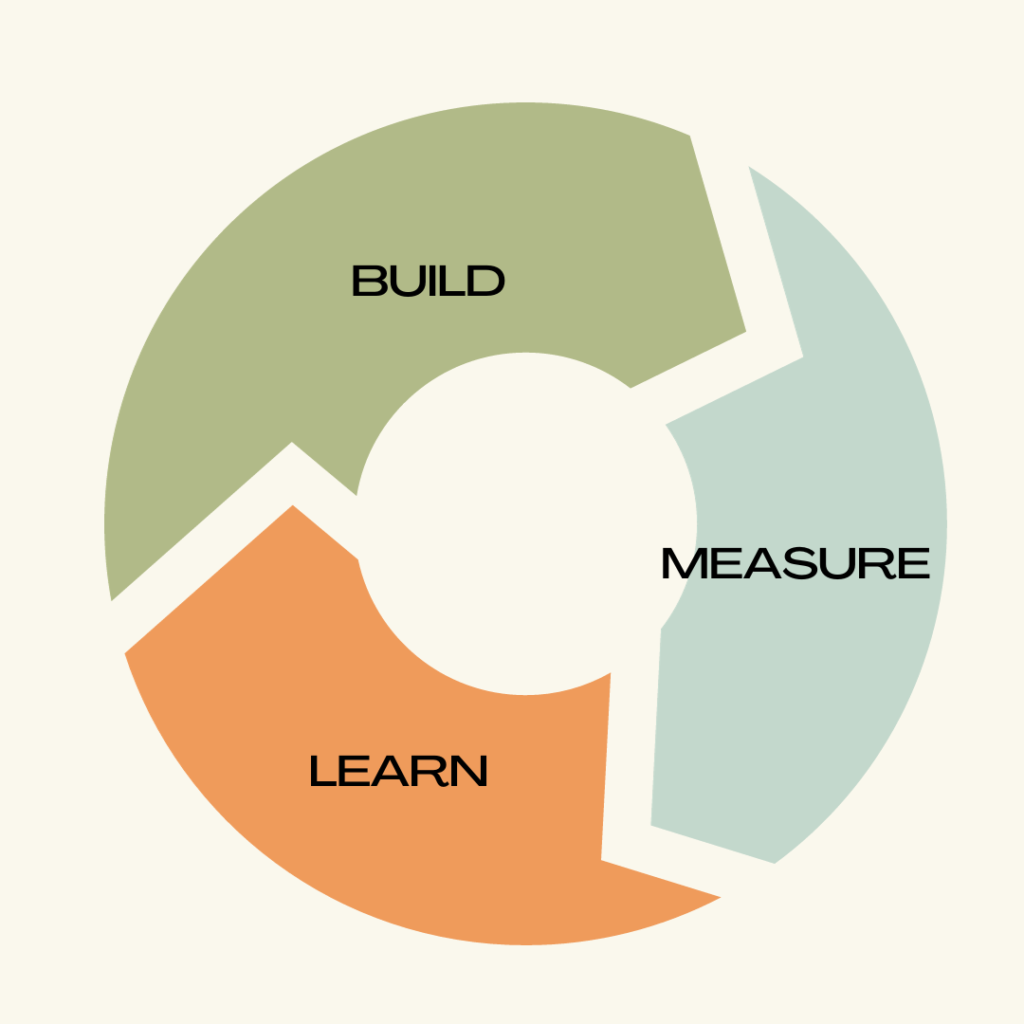Minimum Viable Product or MVP is a basic version of a product with minimal but enough features to be tested by customers. It is introduced to experiment with customers and to take valuable feedback in order to develop the final product. It is based on the concept of Build- Measure-Learn. Here, we firstly build a product, then ask the customers to use it and provide the feedback, so that we can identify what things to add on, what are the needs and expectations of our customers and much more. And finally, we learn and develop our final product that too with least investment.

Well now many of you might argue that just to understand customer needs, why should we develop a product itself, we can rely on existing market research or conduct a survey. To this Eric Ries in his book “The Lean Startup” says we might know what customers think they want and not what they actually need. By building a product instead, albeit a simple one we can learn much more:
- It gives us more accurate data about customer demand as we have observed real customer behaviour and not data based on hypothetical questions.
- It helps us to interact with our users and learn about their needs. For example, the business plan might call for e-commerce i.e., buying and selling of goods and services using the internet but the customers may prefer brick and mortar business.
- It can even surprise us when customers behave in unexpected ways, revealing information that we might not have considered important to ask about. For example, what if our customers find our products expensive?
In addition to this, launching a low-quality early prototype, charging customers from day one, and using low-volume revenue targets is a way to drive accountability.
Usually, much of the time in startup’s life is spent in improving the product and launching the best product possible with no bugs, no area of complaints. In this process they spent months if not years in order to get the perfect product that they think their customers would like. But not every time that is successful, majority of the time their expectations from their customers differ, and thereafter they learn and improve their product as per actual customer requirements. But MVP is there to shorten this process, so that by the beginning you know about your customer needs, and you can save your time and resources.
So overall, MVP have many benefits, some of them are listed below:
- Reduces the risk of failure: By releasing an MVP, you can get feedback from your real customers and ensure that there is actually a demand for your product before you invest too much time and money into it.
- You can focus on the most important features: You can focus on the main features of your product and can avoid wasting time and resources on features that customers may not want or need.
- Speeds up the product development process: You can start collecting feedback from your customers sooner and start iterating on your product more swiftly. Since you already understand the needs of your customers, it becomes easier to develop your product keeping your customers in mind.
- Improved product quality: MVPs permit you to collect feedback from customers and use that feedback to improve your product before you launch it at a larger scale and to a wider audience. This can help you create a product that is more reasonably going to fulfil the obligation of your customers.
- Attracted investors and partners: Investors and partners are more likely to be fascinated in a product that has already been substantiated by customers through an MVP. This can make it easier to raise funding and build partnerships.
Here is an interesting fact:
Do you know the E-Commerce giant Amazon also started as an MVP. Amazon started out as a small online bookstore. The founder, Jeff Bezos, started by selling books from his garage. This allowed him to validate his idea and get feedback from real customers without having to invest too much money in inventory. He then used this feedback to grow the business and expand into other product categories. And today we all know where Amazon stands. This was an example of a successful MVP.
“THINK BIG, START SMALL”
Pingback: Top 10 Mistakes Startups Make | Founders Court | Be your own boss